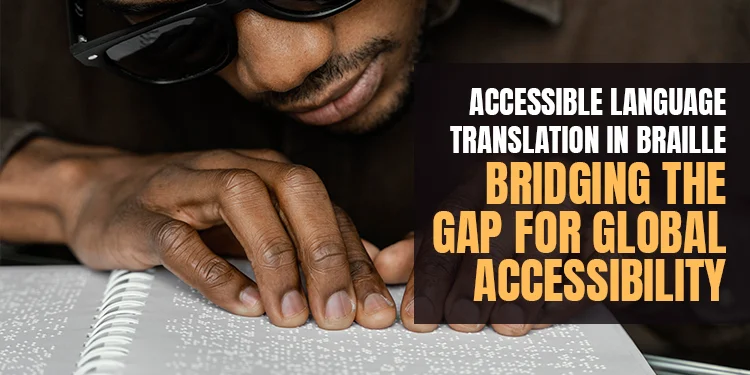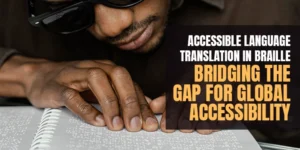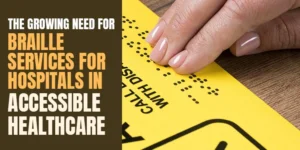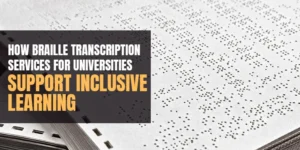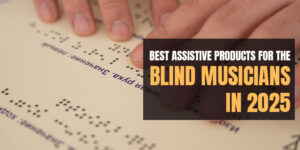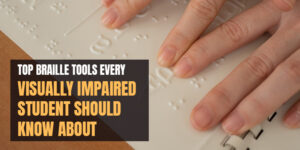Accessibility is more than just a convenience. It’s a human rights issue. Braille translation bridges the gap between communication and empowers millions of people around the world. With the accessibility of translations in Braille, understanding opportunities, culture, and access to information are made more inclusive.
For those who have lost their vision, the translation can open doors to autonomy and active participation in the community.
The Role of Braille in Global Communication
Braille plays an important role in the world of communication. It enables people who are visually or blind impaired to write, read, and gain access to information on their own. Braille is more than an array of dots; it’s a full-language access tool. If properly translated, Braille provides an accurate representation of the written language across all borders. A translation that is accessible using Braille can eliminate barriers to opportunities. Imagine being able to read a novel or a government form, or even a textbook, without limitations.
Many people find that Braille can make this possible and guarantee that everyone has the same access to education, as well as employment and daily life.
Why Accessible Translation Matters
The importance of a translation that is accessible can’t be overemphasized. Language translation aids people in understanding concepts and cultures. If it can be converted into Braille, it can open up opportunities for those who have visual impairment. Take an example of an international student who relies on Braille to learn in a foreign country. Without resources, translated education is restricted.
A fair and accessible translation will ensure that everyone is treated equally by allowing global discussions, access to policies, as well as the enjoyment of literature from around the world. It improves accessibility and reduces isolation, which is the reason why schools, organizations, and government agencies must prioritise Braille translation services.
Challenges in Braille Translation
But transcribing text to Braille has its own difficulties. Each language has its own syntax, symbols, and styles of writing. For instance, punctuation rules used in English Braille differ from French Braille. Direct conversions often result in a number of errors. Another problem is formatting. Musical scores, scientific texts, as well as legal documents require special Braille codes.
Without the right expertise, translations can become inaccurate, which could affect learning and development. Technology is helpful; however, it’s not 100% accurate. Automated translation tools need supervision by a human to ensure accuracy. The professional translator and educator are essential in ensuring that content is valid and usable.
The Impact of Technology
Modern technology has changed Braille translation in many ways. Digital Braille display tools and refreshable displays enable users to find information in a flash. Software can convert text to several Braille codes, allowing users more flexibility. The global collaboration has also led to improved standards, as shown by Unified English Braille (UEB), which has made it easier to communicate for regions that speak English. These developments make it simpler for workers, learners, and readers to interact with content from around the world.
However, accessibility to technology is not always easy. Costs and availability are high. It hinders many from using the latest technology, highlighting how important advocacy is and investing in accessible Braille technology around the world.
Education and Accessible Braille Translation
Education is among the most significant benefits of accessibility to Braille translation. Students now have access to textbooks, research material, and other classroom materials in their native language. Teachers can now share the same content to allow everyone to succeed. The ability to learn in a way that is accessible helps students prepare for their future, which will enable them to compete on an equal level.
Without the translation of Braille resources, educational institutions are at risk of excluding talented and bright students. Through focusing on translation, the schools and universities can make sure that every student is included, and this results in a more unified, more diverse, and inclusive society in which inclusiveness is the norm.
Cultural Exchange Through Braille
Accessible Braille translation is also a way to promote cultural exchange. It is more than just a tool to teach or inform; it also allows readers to read poems, novels, and music from various regions. They can connect with the values and traditions beyond their own borders.
Imagine the possibility of reading Shakespeare with Braille from India, as well as having access to Japanese haiku Braille in America. United States. Music, literature, and information flow in a fluid way in the event that languages are converted and accessible. This enriches people’s lives, fosters empathy, and helps bring cultures closer.
Building a More Inclusive Future
Accessible translation in Braille is contingent on collaboration. Education, NGOs, governments, and tech developers need to collaborate to improve accessibility. Training, funding, and advocacy remain crucial to ensure long-term success. Global accessibility requires dedication and a vision. It is about recognizing that it is not an option, but an obligation.
In investing in the provision of translation services, we promote the possibility of equality. By promoting Braille education, we help to promote the empowerment of people with disabilities. When accessibility becomes the norm rather than the exception, communities become stronger and more connected.
Final Thoughts
Translation of language into accessible Braille can bridge the gap between the realms of education, culture, and communication. It provides opportunities and improves accessibility and inclusion. The challenges remain; however, collaboration and innovation are driving forward.
We are Braille Music and More we are committed to an environment where information is easily accessible to all. Our goal is to offer quality Braille tools that promote accessibility and independence.
Are you willing to work towards access and inclusivity?
Explore our wide range of Braille services at Braille Music and More today. Together, let us create a truly universal communication system.

